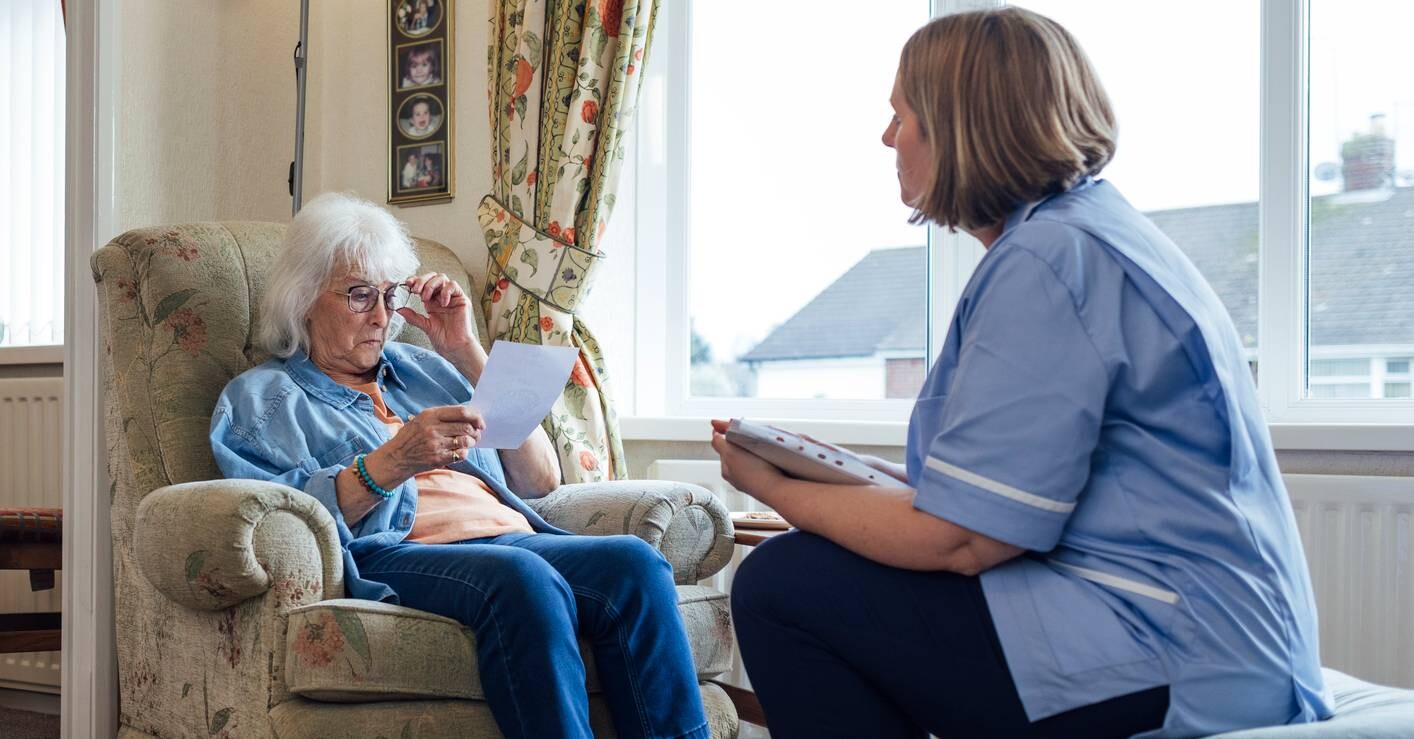Care homes must put honesty first when facing Omicron challenge

With the rapid increase of the Omicron Covid-19 variant, care homes again find themselves in a difficult position, writes George Coxon.
Being ‘open to visitors’ in itself sounds rather institutional – we are not prisons, nor are we hospitals – restrictions are alien to our ethos and core beliefs about homely life in residential care. I’ve said a lot during these past two years that ‘it’s never been more difficult to do the right thing’, and yet again, care homes are ‘caught between a rock and a hard place’ (as another much-repeated expression goes).
Related Article: New preceptorship package for social care nurses
It’s impossible to not now fear for the larger care homes, in particular, some with scores of residents, and many highly vulnerable, who, if infected with this highly transmissible Omicron Covid variant would be at very high risk of serious consequences – but who are, understandably, wanting to share Christmas day with loved ones.
So, what are we to do?
The new government guidance may feel harsh for some, and light for others. There are contradictions in hearing about the ‘Omicron tsunami coming straight at us’ as said by Dr Susan Hopkins of the UKHSA recently, alongside instructions allowing visitors to come to see loved ones regardless of vaccination status – and this is causing care homes to go ‘at risk’. Many are adding their own ‘dynamic risk assessment’ processes, because of course no one size fits all 16,000 care homes across the country.
For my two, thankfully small, non-nursing care homes we are working very much in the spirit of the guidance. This is knowing that not to do so puts us at high risk of not just the infection if we relax our adherence to guidance, but also serious risk from blame and severe consequences from commissioners, safeguarding, Care Quality Commission scrutiny, and the wrath of our insurance providers. Of course, we also face the criticism of residents and families not wanting to see themselves or their much-loved resident put at risk by any care homes ignoring, or even partially deviating from government instruction.
Related Article: Funded nurse workforce plan needed for neighbourhood health services
There are some absolutely crucial principles and top tips for care homes at play in this delicate conundrum, and these include:
- It’s about communication, openness and honest personalised conversations with residents and visiting loved ones – so essentially discussions that share the concerns about risk and supporting contact through some discretion if possible and perhaps negotiation and compromise without causing upset.
- Fundamentally, it’s also about the relationships – care home leaders and staff must forge a respectful bond between residents, families and other much cherished visitors.
- Another critical element must be in establishing mutual trust in one another – how vital it is to feel we are working together to do our collective utmost to stay safe, positive, confident and strong.
- There is equally no doubt in the importance of recognising that many people moving into a care home are entering the latter part of their life and we must exercise some discretion to ‘do the right thing’, balancing risk of criticism and blame with the humanity of enabling love and lifelong connection to prevail at such an important time of the year.
My two care homes have been so proud of being long-standing flag bearers and national ambassadors for the John’s Campaign movement – that promotes the right of people with dementia to be supported by their family carers. Do see the short piece I wrote for them to mark Remembrance Day recently, which also touches on safe visiting for care homes.
Related Article: Nurse had to ‘freeze’ PPE during pandemic to re-use in care home, Covid inquiry hears
It surely is unthinkable that we neither lambast care homes for supporting visits, taking account of all I’ve said here, nor admonish them for taking steps beyond the guidance reflecting their own risks and nuances.
This debate is so needed and should apply another of the things I say so frequently – ‘understand more, condemn less’ – as a core value position as we all strive to become better able to live with viruses such as Covid-19 into the foreseeable future.

See how our symptom tool can help you make better sense of patient presentations
Click here to search a symptom




